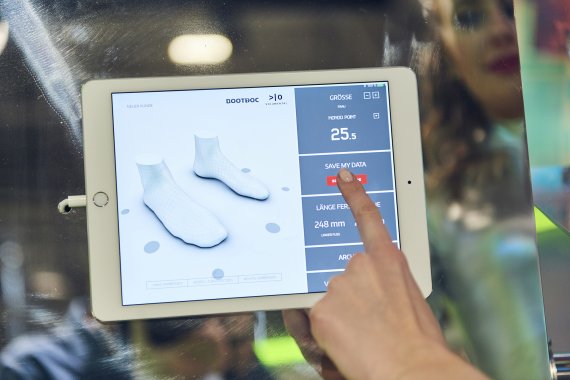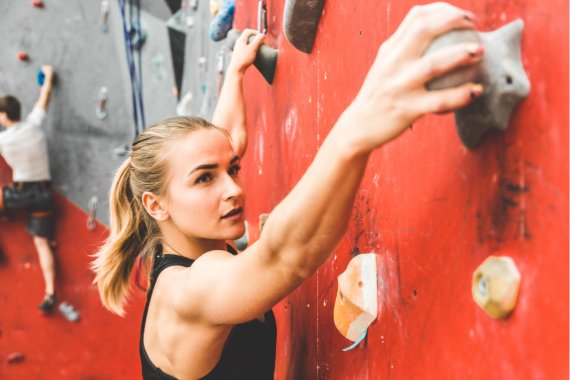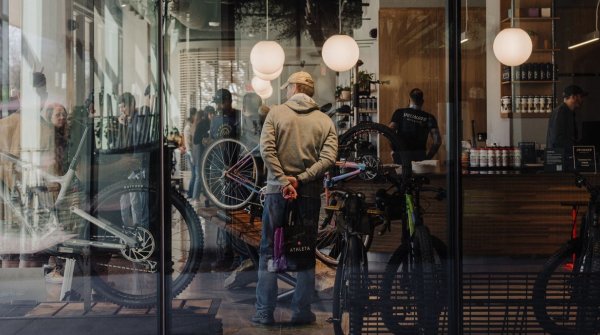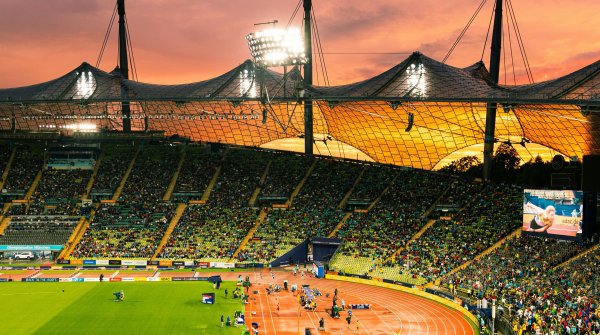Futurologist Matthias Horx once called megatrends "avalanches in slow motion". According to his definition, a trend is a megatrend if it exists for more than 25 years, occurs globally or at least internationally, and has an impact on many areas of life.
Megatrends are deep currents of social change in habits, behaviors, and morals. Unlike fashions, they cannot be created or influenced, because they develop out of society. The Future Institute founded by Horx currently sees 12 megatrends: individualization, gender shift, silver society, knowledge culture, new work, health, neo-ecology, connectivity, globalization, urbanization, mobility and security. ISPO.com presents the five future trends in sports which will be crucial.

Megatrend Individualization: "John Doe" Was Yesterday
Individuality is the sign of the times: more and more people all over the world are seeking an individual lifestyle and identity. This increase in individualization is primarily due to the rise in prosperity, the shortening of working hours, and the rise in the level of education. Traditions and institutions such as politics or the church, which used to provide their followers with standards for living, are becoming less important. Instead, individuals want to find the answer to the question of which way of life is the right one for themselves. They can and want to make more and more life decisions for themselves: for example, in their partnership, in their job, in their education or in their choice of where to live.
This new need for individuality not only influences our values, but also our buying behavior. Customers increasingly expect companies to offer products and services that are individually tailored to them. Mass customization is the keyword - customer-specific mass production. In the case of mass products, the aim is to achieve a further level of individualisation through variation from a few, but crucial, features of the product, which are set up via apps or internet configurators, for example.
Individuality in sport makes sports companies desire to customize sports equipment such as bike frames to fit users' bodies. Companies can produce this individualization on-site in the store - for example with a ski boot. However, here the product in stock must be such that it can be individualized. In the case of a bicycle, on the other hand, where the frame is produced using 3D printing, the customization must begin before production when the customer is measured. This requires completely new production processes.

Megatrend Connectivity: Connected at All Times
Digital communication technologies are creating new lifestyles. The Corona pandemic further reinforced this trend towards digital connectivity when face-to-face meetings had to be replaced by chats, online computer games and video calls. This has implications for sports as well. On the one hand, digitization causes people to move less as they spend more time in front of screens or on their smartphones. But it can also become an opportunity for sport by creating new possibilities - through wearables, smart devices and online communities for sports enthusiasts.
"Digitalisation and sport are not fundamentally mutually exclusive, they can complement each other just as well. So digital features can also help to make sport more interesting, for example through tracking, gamification or by creating communities," said trend researcher Tristan Horx, son of Mathias Horx, in an interview with ISPO.com. Digitalization is thus able to bring sport into people's lifestyles, he added. "Athletes can use digitalization to motivate as many people as possible for sports and exercise," says Tristan Horx.

Megatrend Health: Mindfulness and Self-Optimization
People have never been physically better off than they are today: more and more are experiencing longer and longer lives in better and better health. Nevertheless, the topic is becoming increasingly important. Because people's understanding of what health means is about to change. It is now about much more than just the absence of illness. Health is understood as a synonym for a good, satisfied life. An important part of this is mindfulness, the conscious perception and experience of the present moment. Sport plays an important role in this. Mindful sports such as stand-up paddling or surfing will therefore increase in importance.
The focus is increasingly on self-optimization: "Because people are moving less and less, a healthy, athletic body has therefore become a new status symbol. The special thing about it is that you can only work for it, you can't inherit it," Tristan Horx told ISPO.comPeople are trying to achieve this self-optimization in two ways: Firstly, through optimized nutrition - healthy, high-quality food and food supplements are becoming increasingly important.
On the other hand, by training their own bodies. In doing so, people are increasingly taking advantage of digitalization in the form of digital self-tracking, in which they evaluate their sleep, exercise, and nutrition using apps, pedometers, or tracker bracelets.

Megatrend Neo-Ecology: Sustainability Instead of Profit Maximization
The so-called neo-ecology is seen by many as one of the most important megatrends of the 2020s. Increasingly, environmental awareness is becoming mainstream. The megatrend is not only changing social values, our everyday lives and politics, but is also challenging classic entrepreneurial thinking. It gained even more significance with the Corona crisis, which reminded us that humans are still part of nature.
In this context, environmental awareness and sustainability are becoming key economic factors. Business is challenged to consider sustainability, post-growth, and the common good, rather than focusing solely on maximizing growth and profit. Increasingly, politics is also fuelling this trend. For example, the European Commission has adopted the new Circular Economy Action Plan (CEAP) in March 2020.which is intended to initiate the EU's transition to a circular economy.
Clearly, people who play sports are demanding that sports business providers Sustainability, fair trade and zero waste into their business models. But they are also increasingly reflecting on their own behaviour and asking themselves what impact their choices in destinations and sports products have on their environmental footprint.

Megatrends Urbanization and Mobility: On the Way to More and More Places
The megatrends of mobility and urbanization are closely linked. Whether it's commuting, shopping or holiday and business trips: We are on the move to more places than ever before. The high level of mobility is also leading to a dissolution of the contrast between city and country: life models that were once typical of the city, such as individuality and pluralization, are reaching the countryside. Conversely, village structures are also forming in the city, and the neighbourhood is becoming the centre of life. Sport plays an important role here: sports facilities such as basketball courts, running tracks, half-pipes or bouldering halls become meeting places, where the urban sports community sports community meets.
Mobility in sport is increasingly defined by the merging of work and leisure. The megatrends of health and neo-ecology are influencing mobility: getting from A to B will no longer be enough in the future - sustainability and health will become decisive. Work and leisure, sport and commuting will merge, Urban Outdoor is becoming the new office wear. At the same time, future trends in the sports industry will be increasingly shaped by the bicycle, which will leading to the bike boom is leading to: Wide bike lanes with e-bikes, bike sharing stations and cargo bikes increasingly characterize the cityscape. In this way, the car is being deprived of its significance as a status object: In the future, it will be just one component among many in the mobility concept of the individual.
All these megatrends and their interactions with each other will fundamentally change the way we do and experience sport. In the future, sports will no longer be about breaking records and setting best times, "but about anchoring a new attitude toward life in everyday life," says trend researcher Oona Horx-Strathern, wife of Matthias Horx and mother of Tristan Horx, at ISPO Munich 2020. Her conclusion: "This will massively change sports in the coming years."
 Sports BusinessThe future of the bike industry: 6 innovative bike stores
Sports BusinessThe future of the bike industry: 6 innovative bike stores
- ISPO awards
- Mountain sports
- Bike
- Design
- Retail
- Fitness
- Health
- ISPO Job Market
- ISPO Munich
- ISPO Shanghai
- Running
- Brands
- Sustainability
- Olympia
- OutDoor
- Promotion
- Sports Business
- ISPO Textrends
- Triathlon
- Water sports
- Winter sports
- eSports
- SportsTech
- OutDoor by ISPO
- Heroes
- Transformation
- Sport Fashion
- Urban Culture
- Challenges of a CEO
- Trade fairs
- Sports
- Find the Balance
- Product reviews
- Newsletter Exclusive Area
- Magazine





